This summer, my game Promises was one of the works included in Hexagram’s campus exhibition at Ars Electronica in Linz. Promises is part of my doctoral research in which I explore what kinds of games become possible when featuring vibration as the primary expression instead of for instance screen and sound. Promises is a computationally simple game. It accommodates up to 16 players and is organized around 16 game objects that each have a unique vibration pattern on loop. Four stacks of playing cards initiate four different phases of the game, including 1. getting familiar with one object and its vibrational expression, 2. entering into relationships with other players, 3. keeping an exploration of the different objects, vibrations and rhythms, and finally 4. leaving behind the objects. The core mechanic of the game is exchange, and for each exchange, players invent promises as conditions.
Earlier my games have been part of play festivals, video game events and urban art contexts. Here the game was shown in a performance-like arrangement. Being part of a white-wall installation/exhibition setting is relatively new to me. Together with the curators from Hexagram, we reorganized the game to fit an installation format that would last throughout the exhibition. There are advantages to the installation format. An installation setup would be less consuming on moderation and volunteering resources and work more smoothly with the continuous flow of visitors characteristic for a gallery show.
I eagerly took this challenge suggested by the curators and involved myself in questions around game design robustness, material durability, self-maintenance, and techniques for delegating tasks to the computational, material and non-human elements in the setup that would otherwise be done by a game master.
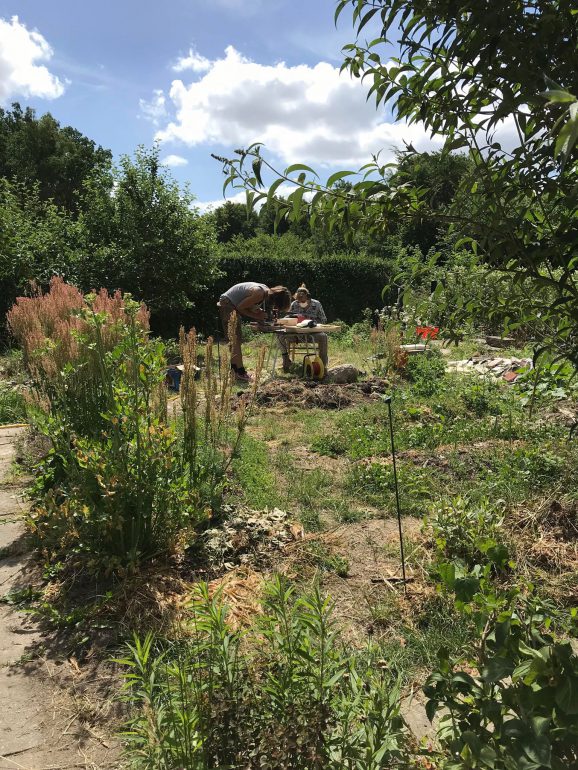
Production in Kasper and Julie’s Garden
It was early holiday season and I was home visiting friends and family in Copenhagen. I decided to use the advantages that “being home” gives. I took the train out of the city to see my old childhood friend Kasper Fleng and his partner Julie Peters. Anticipating that he could give me some advice, I told him about the project. Kasper has a training in furniture carpentry and Julie studies sculpture. One realization I had during my research on vibration is that vibration needs materials to convey its expression. The choice of material matters not only for the quality of vibration but also for how much players invest and care about the objects and, by extension, the game. Therefore, investing in the quality of the game objects was an investment into both game robustness and material durability. At the end of the visit, we had a concrete plan. A production of 16 black wooden objects with embedded vibration technology was planned to start the following Wednesday. We arranged a production setup in his garden (Kolonihavehus) North of Copenhagen, pulled electricity from a neighbour, enjoyed a mild sunburn and gathered everything in the little house every time the rain started falling. Kasper and Julie bounced in and out of the production, interlacing with daily obligations, new toilet building, cooking, and coffee breaks with visiting family and friends.
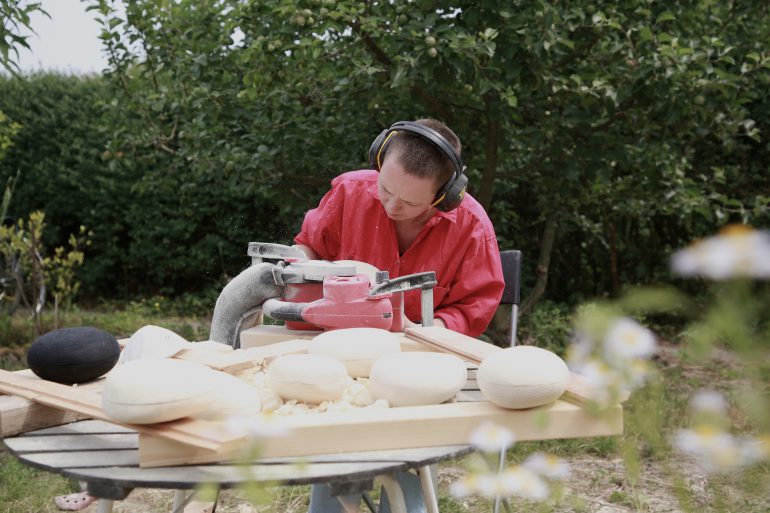
Production in Kasper and Julie’s Garden
Meanwhile, I enjoyed being back in the community around Copenhagen Game Collective, a game community that always feels like home. I invited people for playtesting whenever I had a chance, and enjoyed it as a lovely way to catch up with friends and old colleagues. We played in bars, cafes, parks, and Assistenskirkegården, a big beautiful graveyard in the center of the city. We tweaked word choices in the instructions in the attempt to hit a gameplay that had a delicate balance between both introvert and yet social, realizing that a single word change could evoke a radically different kind of play.
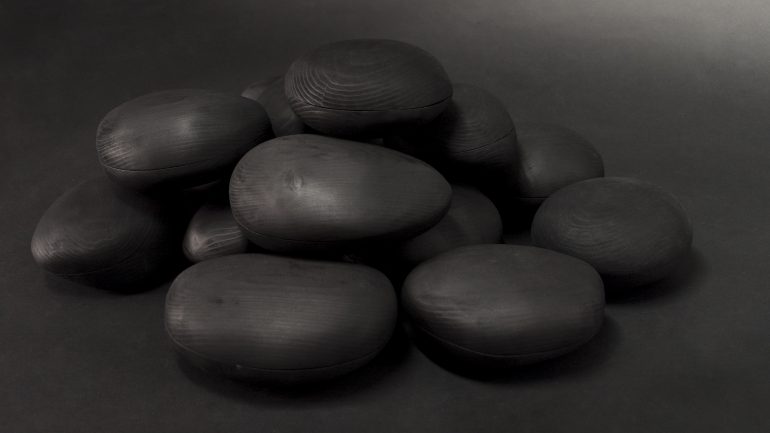
Final Game Objects. Photo by Vjosana Shkurti
Back in Montreal, I asked the talented Liane Décary-Chen to design the cards and visual identity for the games, and conducted the last playtest before shipping everything to Linz.
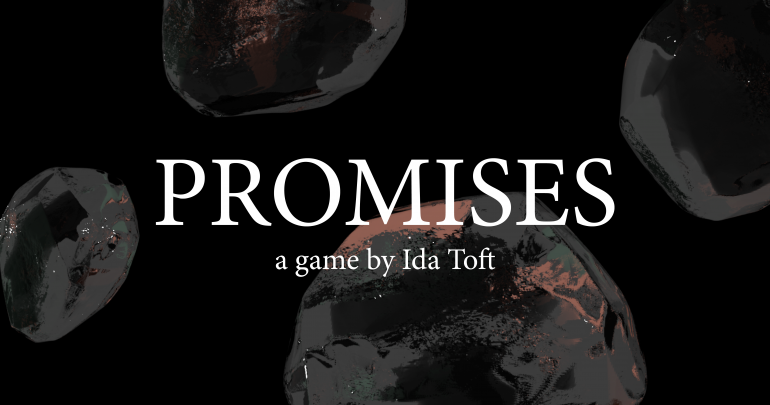
Card design by Liane Décary-Chen
As the first time for me exhibiting games in this context of white-wall gallery exhibition, transitioning from performance to installation work, Ars Electronica was a site for rich learning. Participating in large scale events like these is a huge privilege, providing learning opportunities we cannot get in a class room environments.
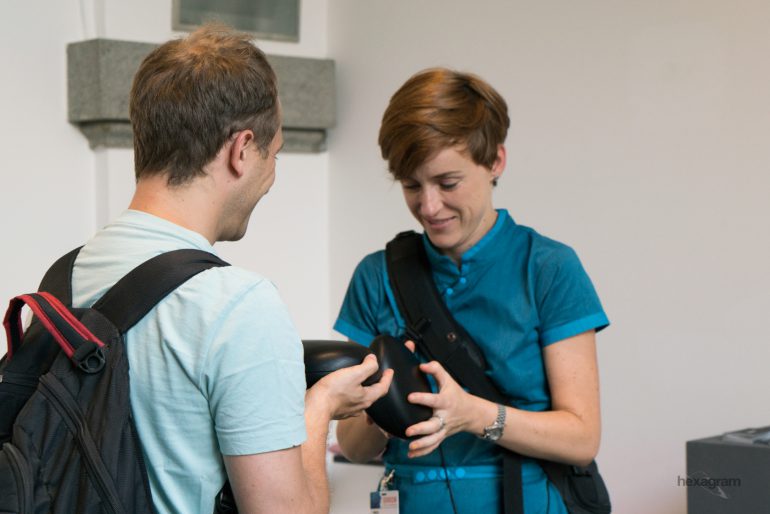
Promises at Ars Electronica, 2018. Photo: Hexagram
I was lucky that Philipp Ehmann came by Hexagram’s exhibition space. Philipp is a curator of urban games. He found the game among the thousands other works presented at Ars Electronia and invited it to “Time Machine,” an urban games festival in Plovdiv, Bulgaria. Due to financial conditions, work obligations, and PhD writing I was unable to be there myself. Stories and photos from the event tells me that it went well, that Philipp had brought the game into a scenery that seemed more like its natural habitat: the raw, smelly, ornamented landscape of the urban space.
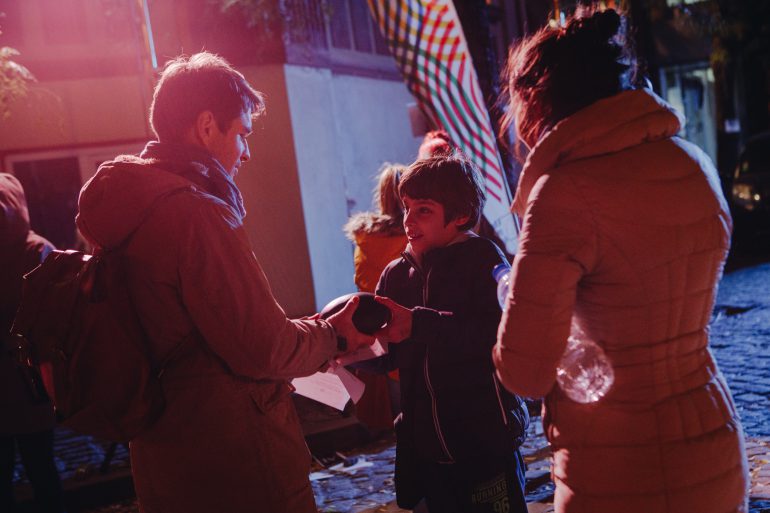
Promises at Time Machine, Plovdiv. Photo: Lina Krivoshieva
Thanks to TAG for helping out with logistics of getting the game to Bulgaria and back again, and to Patrick Jarnfelt and Lena Mech for traveling there from Copenhagen to run the game. It is a privilege to have a community in which we have both competence and enthusiasm to help each other like this! Thanks to Philipp Ehmann and the Plovdiv 2019 Foundation for all your work.
Since art works are always indebted to a network of support and resources, there are a few more to thank: Thanks to Hexagram and to Lab X-modal for sponsoring the early research and production of Promises, to Augustinus Fonden and Knud Højgaards Fond for sponsoring the last stretch, to Milieux Institute, Speculative Life and TAG for providing space and facilities, to Kasper Fleng, Julie Peter and Liane Décary-Chen for your fine crafts and collaboration, to Sabine Harrer and Kalervo Sinervo for consultancy and support, and to every playtester.
